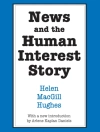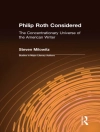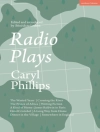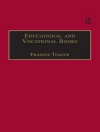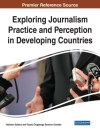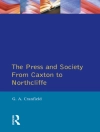<P>As a geometric term, parabola suggests a narrative trajectory or story arc. In science fiction, parabolas take us from the known to the unknown. More concrete than themes, more complex than motifs, parabolas are combinations of meaningful setting, character, and action that lend themselves to endless redefinition and jazzlike improvisation. The fourteen original essays in this collection explore how the field of science fiction has developed as a complex of repetitions, influences, arguments, and broad conversations. This particular feature of the genre has been the source of much critical commentary, most notably through growing interest in the ‘sf megatext, ‘ a continually expanding archive of shared images, situations, plots, characters, settings, and themes found in science fiction across media. Contributors include Jane Donawerth, Terry Dowling, L. Timmel Duchamp, Rachel Haywood Ferreira, Pawel Frelik, David M. Higgins, Amy J. Ransom, John Rieder, Nicholas Ruddick, Graham Sleight, Gary K. Wolfe, and Lisa Yaszek.</P>
Cuprins
<P>Parabolas of Science Fiction – Brian Attebery and Veronica Hollinger<BR>PART I: INTRODUCING PARABOLAS<BR>Fictional Parabolas: Jazz, Geometry, and Generation Starships – Brian Attebery<BR>Dancing with Scheherazade: Some Reflections in the Djinni’s Glass – Terry Dowling<BR>Breaking the Frame – Graham Sleight<BR>PART II: PARABLES OF POLITICS AND POWER<BR>Katherine Mac Lean’s Short Science Fiction and Cytology: Science as Parabola – Jane Donawerth<BR>Second Contact: The First Contact Story in Latin American Science Fiction – Rachel Haywood Ferreira<BR>Parabolas of SFQ: Canadian Science Fiction in French and the Making of a ‘National’ Subgenre – Amy J. Ransom<BR>The Domestic SF Parabola – Lisa Yaszek<BR>PART III: PARABLES OF REMEDIATION<BR>Mad Scientists, Chimps, and Mice with Human Brains: Collapsing Boundaries in Science Fiction – L. Timmel Duchamp<BR>Coded Transmissions: Gender and Genre Reception in The Matrix – David M. Higgins<BR>The Mad Scientist, the Failed Experiment, and the Queer Family of Man: Sirius, Frankenstein, and the SF Stockroom – John Rieder<BR>Back to the Filthy Workshop: ‘Faithful’ Film Adaptations of Mary Shelley’s Frankenstein – Nicholas Ruddick<BR>PART IV: PARABOLIC FUTURES<BR>The Future of the Past: Science Fiction, Retro, and Retrofuturism – Pawe Frelik<BR>Babylon Revisited: Alternate Cosmologies from Farmer to Chiang – Gary K. Wolfe<BR>Science Fiction as Archive Fever – Veronica Hollinger<BR>Notes<BR>Works Cited<BR>Contributors<BR>Index</P>
Despre autor
<P>BRIAN ATTEBERY is the editor of the Journal of the Fantastic in the Arts and a professor of English at Idaho State University. His books include Decoding Gender in Science Fiction and Strategies of Fantasy. VERONICA HOLLINGER is coeditor of the journal Science Fiction Studies and of The Wesleyan Anthology of Science Fiction. She is a professor of cultural studies at Trent University, Ontario.</P>


